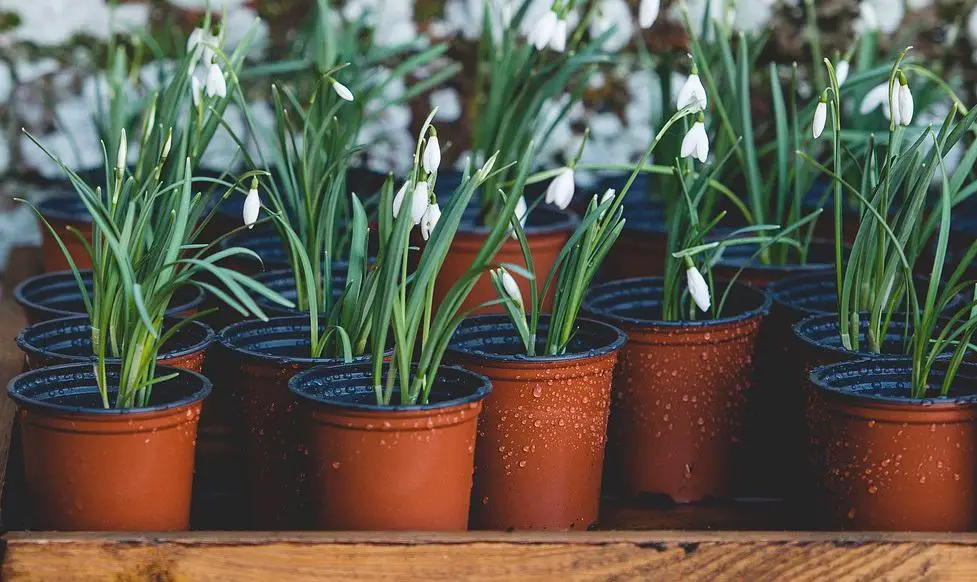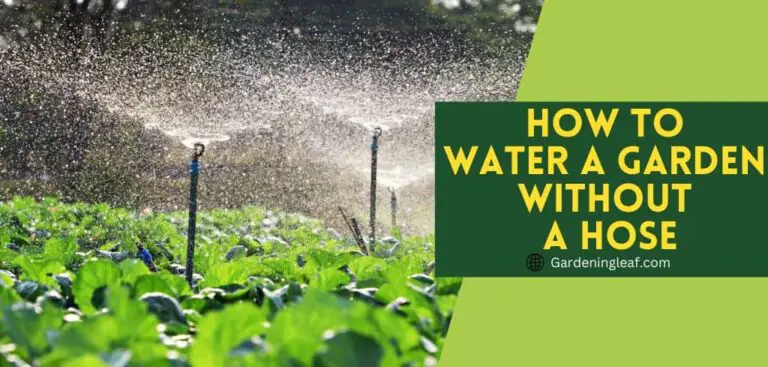How Often Should You Water Tulips: Tips and Tricks
The tulip has a very special and deep place in our hearts. Their breathtaking colors and gentle petals can enhance any abode or garden’s appearance. But taking care of such a beautiful flower could be tricky. Especially about its hydration level!
Although providing enough moisture is important for your beloved tulips’ well-being. Overwatering them might result in damage like underwatering. Thus arises an essential question How often should you water tulips plants?
How Often Do You Water Tulips?
Pot Watering:

If you grow tulips in a pot, water when the soil dries. Check the soil moisture daily to ensure it gets the proper moisture. To decide whether the soil is dry or wet, insert your finger. If it feels dry, it’s time to water it.
But, during the summer months, you may need to adjust your watering schedule based on location. In some cases, you may need to water your plants daily. You can use a moisture meter to get a more accurate reading of your soil moisture level.
Remember When watering your plant. Water it until the soil is completely wet and excess water starts coming out from the bottom of the drainage holes.
In-Ground Watering

If you have in-ground tulips. Weather and soil conditions influence how much you need to water. Tulips like moist soil. But, tulips cannot tolerate standing water or waterlogged soil.
Tulips favor moisturized soils. But cannot withstand standing water or overly soggy conditions. To ensure proper growth during the growing season period. Gardeners should provide one weekly round of irrigation unless harsh weather conditions , where more water may be needed frequently than the usual timespan.
When watering tulips in the ground, use a gentle stream to moisten the soil to a depth of about 6 inches. Avoid spraying flowers or leaves, leading to disease and fungal problems.
Read More : – How Often to Water Geraniums in Pots?
Factors to Consider When Watering Tulips
When thinking about how often should you water tulips, you need to consider a few points.
Climate and Weather Conditions
When you water your tulips, consider the climate in your area. If you live where the climate is very hot and the humidity is very high, you must water your plant more frequently than in colder climates.
Again, in rainy seasons, you also need to adjust your water according to the weather. You may not need to water at all during the rainy season if it rains often.
So climate and weather conditions always play a big part in your plant’s water requirements.
Soil Type and Drainage
Soil type can have a significant effect on how much water tulips need. If you have sandy soil, water will drain out quickly . So it would help if you watered more frequently . Otherhand heavy soils keep moisture for longer periods. If you have clay soil. Which is denser and retains water for longer periods.
For this reason, you should always add compost, peat moss, or sand into the soil to enhance drainage. It will improve drainage and increase the moisture-holding capacity of the soil.
To properly water tulips, it’s important to take your time and water deeply. This allows the water to penetrate the soil fully and encourages healthy root growth. It’s also crucial to wait until the soil has dried out a bit before watering again, as overwatering can lead to root rot and Fungal infections can lead to the demise of a flower. Remember to be patient and consistent in your watering routine for the best results.
Read More : – How Often Should You Water A Bonsai Tree?
Tulip Growth Stage
The growth stage of your tulips also influences how often you should water them. Newly planted bulbs need consistent moisture to establish their roots. while mature plants may need less watering. It depends on their natural water retention abilities. Monitor the soil’s moisture level and modify your watering plan accordingly.
Sunlight Exposure
Sunlight exposure is another factor that affects the watering schedule of tulips. Growing Tulips in full sun area, soil dry out quicker than in shaded areas. Thus, it requires more frequent watering.
For plants exposed to direct sunlight, it is recommended to water them during the cooler hours of early morning or late afternoon.
Rainfall
If your area is getting lots of rainfall. It’s best to wait until the soil dries out before watering again. But, if your area has been experiencing a drought or dry spell, you may need to water more frequently. It is important to balance sufficient moisture to your tulips while avoiding waterlogging them.
Snow
Snow is like a natural water source but is not ideal for tulips. Snow can cause damage to your tulips by weighing down the stems and causing them to bend or break. It’s best to gently brush any snow off of your tulips as soon as possible. Snow contributes to the soil’s moisture. To provide optimal watering, it’s essential to monitor the soil’s moisture level and adjust the watering schedule as needed.
How Often Should You Water Tulips During Different Stages?

Watering Newly Planted Tulip Bulbs
Newly planted tulip needs more frequent watering than fully grown plant. Water help settle the soil around them and encourage root growth. After planting, water your tulip bulbs twice to thrice a week for the first few weeks until they are fully grown.
Watering Mature Tulips
Mature tulips need less frequent watering than newly planted bulbs. When they have become rooted, your tulips should be watered once weekly without rainfall. Adjust your watering schedule based on soil moisture levels, sunlight exposure, and rainfall.
Watering Tulips During the Growing Season
To ensure healthy growth and vibrant blooms, tulips require more water during their growing season. It’s best to water them deeply and slowly, allowing the water to penetrate the soil and reach the roots. This promotes the growth of stronger and deeper roots. It’s important to regularly check the soil moisture level by sticking your finger into the ground up to your knuckle. When the soil feels dry, it’s time to water. To avoid water evaporation, refrain from watering during the hottest part of the day. Instead, opt for watering early or late afternoon when temperatures are cooler.
Watering Tulips After Bloom
After your tulip plant has finished blooming, continue watering them until the leaves have turned yellow and withered away. This will allow the bulbs to store energy for next year’s growth. Continue to water once a week if there has been no rainfall.
Once leaves have completely faded away, stop watering until it’s time to plant new bulbs in the fall. Tulips are dormant during the summer months. So they do not need as much water as they do during their growing and blooming season.

Techniques for Watering Tulips
Here are some techniques for watering tulips:
- Watering from above vs. below: The best to water tulips from below, at the soil level, rather than from above. Above water can wet the leaves and flowers, leading to fungal diseases. Watering from below ensures that the water reaches the roots where needed.
- Proper watering: Tulips require around one inch of water weekly. Water deeply once a week to ensure that the soil is moist.
- Use of mulch to keep moisture: Mulching around tulips can help keep soil moisture and reduce water evaporation from the soil surface. Surround the tulip bulbs with organic mulch, such as shredded leaves or bark chips. The mulch’s ability to retain soil moisture and suppress weeds is a bonus.
- Timing of watering: You may water tulips in the morning or at night. As the weather gets colder, this will help keep more water in the ground.
Using these techniques, you can ensure that your tulips receive the right amount of water for healthy growth and beautiful blooms.
Signs of Overwatering and Underwatering Tulips
How to Identify Overwatering
Here are some signs that your tulips may be overwatered:
1. Yellowing Leaves: If the leaves of your tulips are turning yellow or brown, it may be a sign of overwatering.
2. Wilting: While it may seem counterintuitive, overwatering can actually cause your tulips to wilt.
3. Mushy Bulbs: Overwatering can also cause the bulbs of your tulips to become mushy or soft. This is a sign that the roots are rotting, which can lead to the death of the plant.
How to Identify Underwatering
1. Dry Soil: If the soil around your tulips is dry to the touch, it may be a sign that they’re not getting enough water.
2. Stunted Growth: if you notice that your plant not growing as much as you wanted, one of the reasons may be underwater.
3. Brown, Crispy Leaves: If the leaves of your tulips are turning brown and crispy, it may be a sign of underwatering.
Faqs
How Much Water Do Tulips Need Per Day?
During their growing season, usually in the spring, tulips require approximately 1 inch of water per week. However, the necessary daily amount of water may vary depending on your location’s temperature and humidity levels. Monitoring the soil moisture regularly and adjusting your watering schedule accordingly is crucial.
Do Tulips Like Wet or Dry Soil?
For optimal growth, tulips require a well-drained soil that is sufficiently moist but not overly saturated. Overwatering can cause bulb decay, whereas under-watering can result in stunted growth and wilting. It’s important to balance wet and dry soil for tulips.
Conclusion
We hope this post helped you understand How often should you water tulips. Initially, it may appear complicated, but once you learn the tulip growth and nurturing process, it will become effortless for you. For gardening lovers, growing tulips is the ultimate satisfaction.






